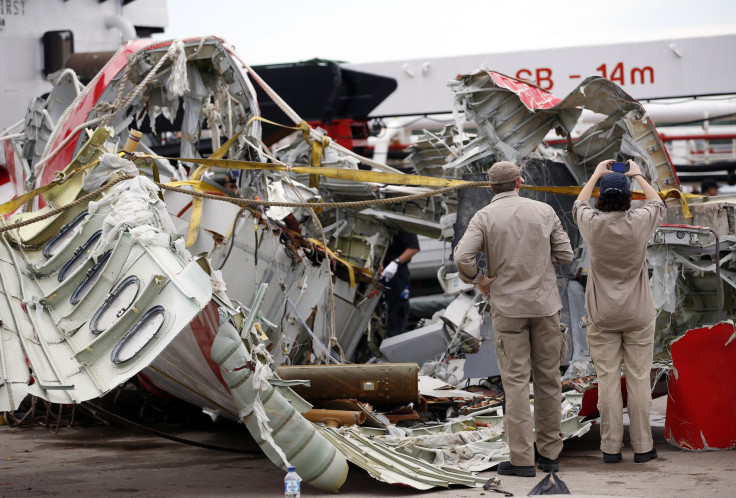AirAsia Flight 8501: Jet Likely ‘Experienced An Explosion’ Official Says, Another Refutes Theory

An initial analysis of the wreckage of AirAsia Flight 8501 indicates that the jet, which crashed in the Java Sea on Dec. 28, likely “experienced an explosion,” media reports said Monday, citing an Indonesian official. However, it was unclear if the explosion occurred before or after the jet hit the water.
Suryadi B. Supriyadi, director of Indonesia's search and rescue agency, reportedly said that the plane’s left side seemed to have disintegrated, pointing to an explosion caused by a significant change in cabin pressure. But, Indonesia’s transport safety investigator said that there is no evidence to support the theory of an explosion, The Straits Times reported.
"My analysis is, based on the wreckage found and other findings, the plane experienced an explosion before it hit the water," Supriyadi told reporters, according to Reuters. According to The Guardian, which also cited Supriyadi, the wreckage indicates that the plane exploded on impact with the water.
However, Santoso Sayogo, an investigator at the National Transportation Safety Committee, reportedly said: “There is no data to support that kind of theory."
Since the plane disappeared on Dec. 28, several theories have been proposed as to the reason for the aircraft's crash.
Some experts had claimed that Flight 8501's pilot, Captain Irianto, may have managed to safely land the aircraft in the Java Sea before it was sunk by giant waves. Meanwhile, some sources close to the investigation had said that data transmitted by the plane just before it lost contact with air traffic controllers suggested that the aircraft may have executed an extremely steep climb to avoid a storm in its path, possibly causing a stall and resulting in a crash.
The plane, which was on its way to Singapore from Surabaya, Indonesia, with 162 people on board, was travelling at an altitude of 32,000 feet when the pilot requested a change of course to avoid bad weather. That was the last known communication from the plane.
On Monday, divers recovered the black box of the Airbus A320-200 from the Java Sea and its data will be analyzed in Jakarta. Investigators are hopeful that the analysis of the black box, which is reportedly in good condition, could help determine the cause of the crash.
Meanwhile, searchers have also found the cockpit data recorder about 20 meters from where the flight data recorder was found, but are yet to retrieve it. According to Supriyadi, large balloons could be used to raise the plane's wing in order to retrieve the cockpit voice recorder, Channel News Asia reported.
On Monday, two more passengers of Flight 8501 were reportedly identified as 20-year-old Elisabeth Youvita and 37-year-old David Gunawan, both from Surabaya. So far, 48 bodies have been recovered from the Java Sea and searchers believe more bodies may be found in the plane’s fuselage.
© Copyright IBTimes 2024. All rights reserved.











